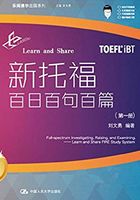
Day 5
Passage 5
Japanese Climate
① Japan's climate is rainy and humid, and marked, in most places, by four distinct seasons. The country's wide range of latitude causes pronounced differences in climate between the north and the south. Hokkaidō and other parts of northern Japan have long, harsh winters and relatively cool summers. Average temperatures in the northern city of Sapporo dip to –5°C (24°F) in January, but reach only 20°C (68°F) in July. Central Japan has cold but short winters and hot, humid summers. In Tokyo in central Honshū, temperatures average 3°C (38°F) in January and 25°C (77°F) in July. Kyūshū is subtropical, with short, mild winters and hot, humid summers. Average temperatures in the southern city of Kagoshima are 7°C (45°F) in January and 26°C (71°F) in July. Farther south, the Ryukyu Islands are warmer still, withfrost-free winters.
② The dissimilar climate of Japan is influenced by the country's location on the edge of the Pacific Ocean, and by its proximity to the Asian continent. The mountain ranges running through the center of the islands also influence local weather conditions. The Sea of Japan side of the country is extremely snowy in winter. Cold air masses originating over the Asian continent absorb moisture as they pass over the Sea of Japan, then rise as they encounter Japan's mountain barriers, cooling further and dropping their moisture in the form of snow. The heaviest snows are in Nagano Prefecture, where annual accumulations of 8 to 10 m (26 to 30 ft.) are common. In contrast, Pacific Japan lies in a snow shadow on the sheltered side of the mountains and experiences fairly dry winters with clear skies.
③ From June to September this pattern reverses. ■ Monsoon winds from the Pacific tropics bring warm, moist air and heavy precipitation to Japan's Pacific coast. A month-long rainy season called baiu begins in southern Japan in early June, traveling north as the month progresses. ■ Baiu is followed by hot, humid weather. ■ During this period, violent storms called typhoons come ashore in Japan, most often in Kyūshū and Shikoku. Japan's distant tropical islands also suffer typhoon damage. ■ Meanwhile, throughout the summer, the Sea of Japan coast is protected from the Pacific influences by the mountains and is relatively dry. Northern Honshū and Hokkaidōreceive relatively little summer precipitation. Average annual precipitation in Sapporo is 1,130 mm (45 in), while in Tokyo it is 1,410 mm (55 in) and in Kagoshima it is 2,240 mm (88 in).
④ Generally, autumn and spring are pleasant in all parts of Japan. The season when cherry blossoms open is particularly festive (the flowering time changes with the latitude and elevation, yet is typically during late March and early May.【1】)
⑤ Japan ranks as the world's ninth most populous nation, with a population of 127,467,170 (2007 estimate). It is also one of the most crowded, with an average population density of 140 persons per sq. km (881 per sq. mi). Affected by the different climatic regions, the population is distributed unevenly within the country. Densities range from the very low levels in the steep mountain areas of Hokkaidō and the interior of Honshū island, to extraordinarily high levels in the urban areas of Japan's larger plains. The most crowded area is central Tokyo, where overall population density is about 11,000 persons per sq. km (about 11,000 per sq. mi). About 66 percent of Japan's people are concentrated in urban areas, making Japan one of the most heavily urbanized nations in the world.
——2012年 5月 5日北美机经
Look at the four squares【■】that indicate where the following sentence can be added to Paragraph 3.
In late August and September, the shūrin rains come to much of the country, often as torrential downpours that trigger landslides and floods.
Where would the sentence best fit?


词汇练习:
阅读下列句子,用所给单词(或词组)的正确形式填空:
subtropical
range
accumulation
precipitation
proximity
humid
1. Properly speaking, tropical rainforests grow in high-rainfall equatorial areas that remain wet or ______ all year round.(TPO-14:Maya Water Problems)
2. Many are found in tropical and ______ areas of the world, where accumulation of high concentrations of metals may afford some protection against plant-eating insects and microbial pathogens.(TPO-1:Minerals and Plants)
3. Seeing and talking with one another in close physical ______ makes possible a subtle exchange of ideas and feelings.(TPO-11:Types of Social Groups)
4. Trade was the mainstay of the urban economy in the Middle East, as caravans negotiated the surrounding desert, restricted only by access to water and by mountain ______.(TPO 16:Trade and the Ancient Middle East)
5. Oil pools are valuable underground ______ of oil, and oil fields are regions underlain by one or more oil pools.(TPO-4:Petroleum Resources)
6. Succession is influenced by many factors: the nature of the soil, exposure to sun and wind, regularity of ______, chance colonizations, and many other random processes.(TPO-11:Succession, Climax, and Ecosystems)
参考答案:
1. humid
2. subtropical
3. proximity
4. ranges
5. accumulations
6. precipitation
【1】与今日百句译(Sentence 5)相同的句型。